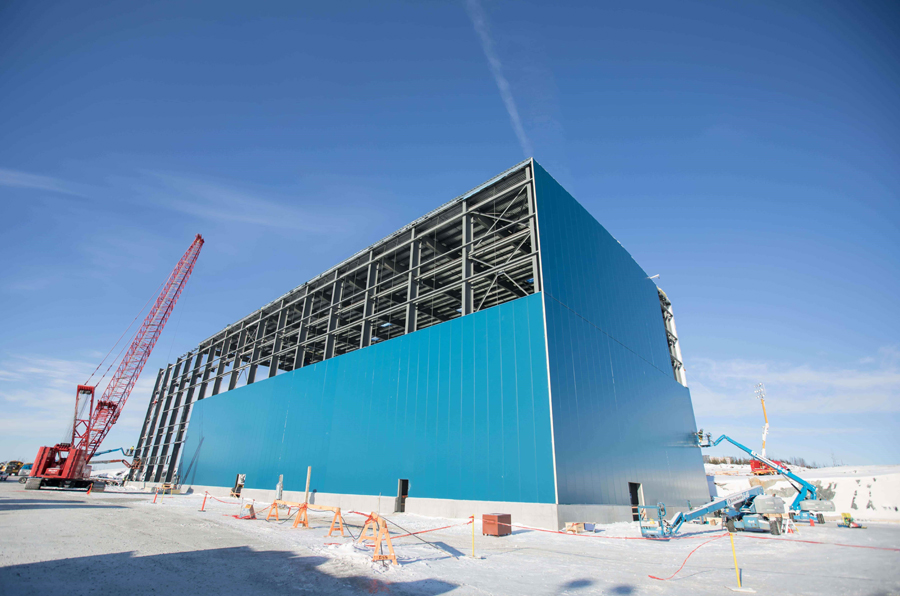
At a cool $100 billion, SoftBank’s Vision Fund is the biggest technology investment fund in history with investments that range from $300 million in a dog-walking app called Wag (you read that right) to a reported $4.4 billion in office space company WeWork.
Now the Japanese firm is entering the mining sphere for the first time, buying up to 9.9% of Canada’s Nemaska Lithium and investing up to $78m through a private placement as part of the agreement. Nemaska’s shares trading in Toronto shot up 15% on Friday lifting the Quebec City-based company’s market value to $412m.
SoftBank will have the right to nominate a member on Nemaska’s board and will also have the option to buy up to 20% of the miner’s output of the battery raw material over the long term, the company said in a statement.
Nemaska, which has also received funding from the Quebec and Canadian governments, is building the Whabouchi hard rock lithium mine in the James Bay region and Shawinigan processing plant north of Montreal in Quebec for a capital outlay of roughly $620m.
SoftBank’s enigmatic CEO Masayoshi Son, which has secured investments for his fund from Saudi Arabia and Apple among others, was effusive about the deal:
“We are extremely pleased to be further accelerating the Mobile Revolution, an era of IoT (Internet of Things) and electric vehicles enabled by the fusion of technology and energy storage.”
Reuters separately reports Friday that Nemaska is in talks with private equity firm Orion Mine Finance about a streaming deal – an upfront investment in exchange for a share of future production, usually at a steep discount.
Nemaska said last week it was in the final stages of negotiating a $150 million streaming transaction and up to $350 million in debt financing. New York-based Orion earlier this year closed a $2.1 billion mining investment fund, the second largest private equity fund of its kind in history and the biggest in five years for the sector.
Price projections
A month ago Morgan Stanley sent shares of lithium producers and explorers tumbling after the investment bank forecast a huge surplus in the market in 2022, resulting in forecast prices nearly halving from today’s levels.
The negative assessment raised eyebrows in the industry with executives criticizing Morgan Stanley for vastly underestimating the rise in demand, production ramp-up problems and bottlenecks with processing of battery-grade lithium compounds.
Morgan Stanley’s bearish outlook was echoed by commodities researcher Wood Mackenzie which is forecasting a decline in the price of lithium this year that would turn into a rout from 2019 onwards.
Woodmac expects demand to grow from 233 kilotonnes (kt) in 2017 to 330kt of lithium carbonate equivalent in 2020 and 405kt in 2022, but that “the supply response is under way” and from 2019 supply will start to outpace demand more aggressively and price levels will decline in turn.
From highs near $26,000 a tonne in December, the London-based consulting firm sees prices averaging roughly $13,000 this year, dropping to below $9,000 in 2019. By 2022 lithium carbonate is forecast to average $6,500.
Not that these prices are much of a concern for the likes of Nemaska. In its March corporate presentation the company said it can produce lithium carbonate from its plant for $3,403 per tonne and lithium hydroxide for $2,811 making it one of the lowest cost producers anywhere in the world.
Nemaska is targeting production of 23kt of lithium hydroxide and 11kt of lithium carbonate from the spodumene mine per year. The company has already signed offtake agreements for 40% of its future production excluding Softbank’s option. The bulk of lithium today is produced from salt flats in South America followed by hard-rock mines in Australia.
